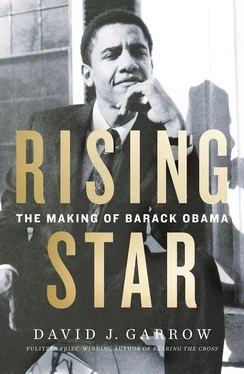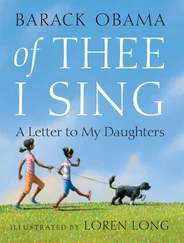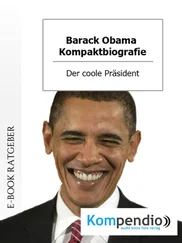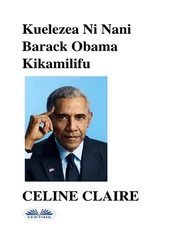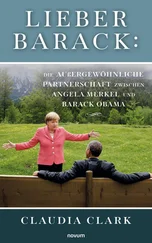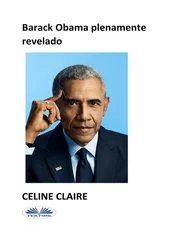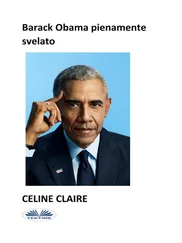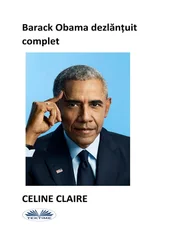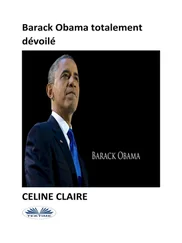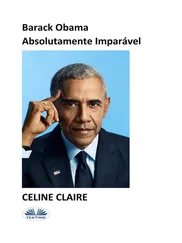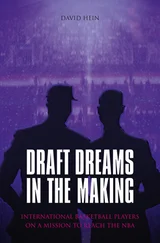To Keith Peterson, Barry’s “parental piece was a total and complete mystery,” and one Barry never spoke of. “I knew nothing about his father” and “I can’t say that I knew he had a mother at all.” Barry “lived with this older white couple” and “both of his parents so to speak were white.” Indeed “I thought that he was actually adopted by a white family,” that this “older couple had adopted him.” And, in reality, Keith’s impression was not at all wrong. As Madelyn’s younger brother Charles put it, Barack Obama “was raised in a white family.” Bobby Titcomb knew that Stan and Madelyn were Barry’s grandparents, but he understood that actually they were more than that. “You call them grandparents, but they were his parents growing up.”
Yet no one speaks more powerfully, more movingly, about what it was like to be black at Punahou in the late 1970s than Kim Jones Nelson. “It is different being black growing up in Hawaii” than anywhere on the U.S. mainland, she explains. Even more significantly, “It’s an enormous privilege to be a black person in America and grow up in Hawaii. There is no other place in the entire U.S. that provides you with that experience where the color of your skin, the darker your skin is, is not a bad thing.” Just as Frank Marshall Davis had realized thirty years earlier, “the whole race dynamic is turned on its head in Hawaii,” for “in 1970s Honolulu,” as one veteran Asian American journalist would recount, “white people were routinely the target of discrimination,” not African Americans.
Kim Jones had arrived at Punahou in 1976 for ninth grade, and it was “such a multicultural world” that “I never thought about” being the only black female among sixteen hundred students. Hawaii has “just a different worldview,” and “Punahou’s a reflection of the island culture, which is an extremely inclusive culture” of so many countless mixed ethnicities that “I would have had no idea what somebody was.” Across four years at Punahou, Kim had no experience of discrimination. “Not ever. Never, ever, ever. Certainly nothing associated with race.” What instead stood out was “the quality of the teaching” and the richness of the curriculum: the Novel and Film, art history, creative writing. “I loved Punahou.” She barely knew Barry. “He was part of that jock group,” and “I can’t recall any personal interactions with him.” 36
On at least one occasion twenty years later, Obama acknowledged “the carefree childhood I experienced in Hawaii” and “how truly lucky I was to have been raised” there. He would give thanks as well for “the wonderful education I received at Punahou” and how “Punahou gave me a great foundation,” especially in terms of “values and ethics,” whose “long-term impact on the trajectory of my life” he would appreciate only a decade later. As a prominent African American, Chicago-based theologian who worshiped in the same church later emphasized, above all else, including color, complexion, and race, first and foremost Barack “Obama is Hawaiian.” 37
Eight or ten weeks in advance of Punahou’s June 2, 1979, graduation ceremony, seniors had to submit whatever they wanted published on the one-quarter page they would each have in the 1979 Oahuan. Mark Bendix’s would contain sketches of his VW bus, the “choom van,” and the Koolaus mountain range above Pearl City, plus a “thanks for everything” to classmates whose initials readily translate into their full names: Barry Obama, Kenji Salz, Joe Hansen, Greg Orme, Russ Cunningham, Tom Topolinski, Wayne Weightman, Mark Hebing, and others. Russ Cunningham’s page featured a trio of small photos of Barry, Kenji, and Greg, and “Special Thanks to Friends, Family, Choom Gang.” Both Hebs’s and Topo’s were free of any such allusions, but Orme’s read, “Many thanks to all my friends. Especially the Choom Gang,” with initials for Bendix, Barry, Hansen—who had left school—Kenji, and Cunningham. Kenji’s featured a photo that included Barry and captioned “Ooooochoom Gangooooooo”; his acknowledgments included Bendix, Orme, Barry, Hansen, Cunningham, Hebs, and Weightman. Wayne’s featured the slogan “Fellow students: it’s time to choom!” and a reference to “Pumping station blues.”
Barry Obama’s quarter-page was by far the most striking of all.
Its upper-right corner featured a handsome photo of Barry in a jacket and wide-collared shirt that could have been borrowed from the 1977 dance film Saturday Night Fever. At upper left was a picture of a happy, smiling Obama on a basketball court, captioned “we go play hoop.” At the bottom was a photograph labeled “still life” that included a beer bottle, a record turntable, a telephone, and rolling papers. In the middle was Barry’s chosen message: “Thanks Tut, Gramps, Choom Gang, and Ray for all the good times.”
Decades later, that sentence would receive far less public attention and discussion than it should have. Barry, alone of all the Choom Gang, had singled out their weird, gay, porn-showing drug dealer by name and thanked him “for all the good times.” As Tom Topo most frankly acknowledged, the Choom Gangers had spent plenty of time with Gay Ray over the previous two years, but a public—and permanent—thank-you to their drug connection was something that all the others, even Mark Bendix, did not go so far as to put into print.
Although decades would pass before Obama would learn of his fate, on New Year’s Day 1986, a sleeping thirty-seven-year-old Ray Boyer was bludgeoned to death with a hammer by an angry twenty-year-old male prostitute in an apartment less than two blocks south of 1617 South Beretania Street. 38
Several days in advance of the graduation ceremony, Ann Dunham returned to Honolulu from Indonesia for the first time in a year. In late 1978, she had completed her fieldwork for her dissertation but, low on funds, had taken a well-paying job with a USAID contractor, Development Alternatives Inc. Based in the Central Java city of Semarang, the job came with a house, servants, and a driver. She and Lolo were on the verge of formally divorcing, and, staying once again at Alice Dewey’s home, she soon would adopt Dewey’s suggestion that she keep Soetoro as her surname rather than revert to Dunham. But she also made a change from Lolo’s colonial Dutch spelling to the Indonesian “Sutoro.”
Preparations for the Saturday-night commencement required extensive choral rehearsals on the part of the entire graduating class. Punahou’s senior prom took place the night before, Friday, June 1. Greg Orme and his steady girlfriend, red-headed Kelli McCormack, hosted Barry and his date, Megan Hughes, a student at La Pietra School for Girls near Diamond Head, for champagne at her family’s home before the two couples headed to the dance and then an after-party. Decades later Kelli would describe Barry and Greg as “like brothers” and described Barry as “very intelligent and witty.” Megan’s presence that evening was the first time Kelli had seen Barry with a date, but in Kelli’s memory, Megan was “gorgeous…. She had the face of an angel and the body of a goddess.” But Barry’s relationship with her was short-lived. In 1983 Megan would have a brief appearance in one episode of the television series Magnum, P.I., which was filmed on Oahu. A decade later Hughes would appear as Terence Stamp’s girlfriend in a movie called The Real McCoy, starring Kim Basinger. Two years later Megan had her own starring role in an R-rated “erotic adventure” film titled Smooth Operator, but her topless appearance failed to make the movie a popular or commercial success.
Yet in 1979, with Orme already scheduled to be away from Hawaii that summer, Barry betrayed more than a hint of desire for his best friend’s girl in the message he wrote in Kelli’s yearbook. “It has been so nice getting to know you this year. You are extremely sweet and foxy. I don’t know why Greg would want to spend any time with me at all! You really deserve better than clowns like us; you even laugh at my jokes! I hope we can keep in touch this summer, even though Greg will be away.” Inscribing his grandparents’ phone number, Barry encouraged Kelli to “Call me up and I’ll buy you lunch … good luck in everything you do, and stay happy. Your friend, Love, Barry Obama.” McCormack soon broke up with Orme, and she did like Barry. “He and I really clicked. We had great vibes between us,” she recounted years later. But she never called him that summer. 39
Читать дальше
